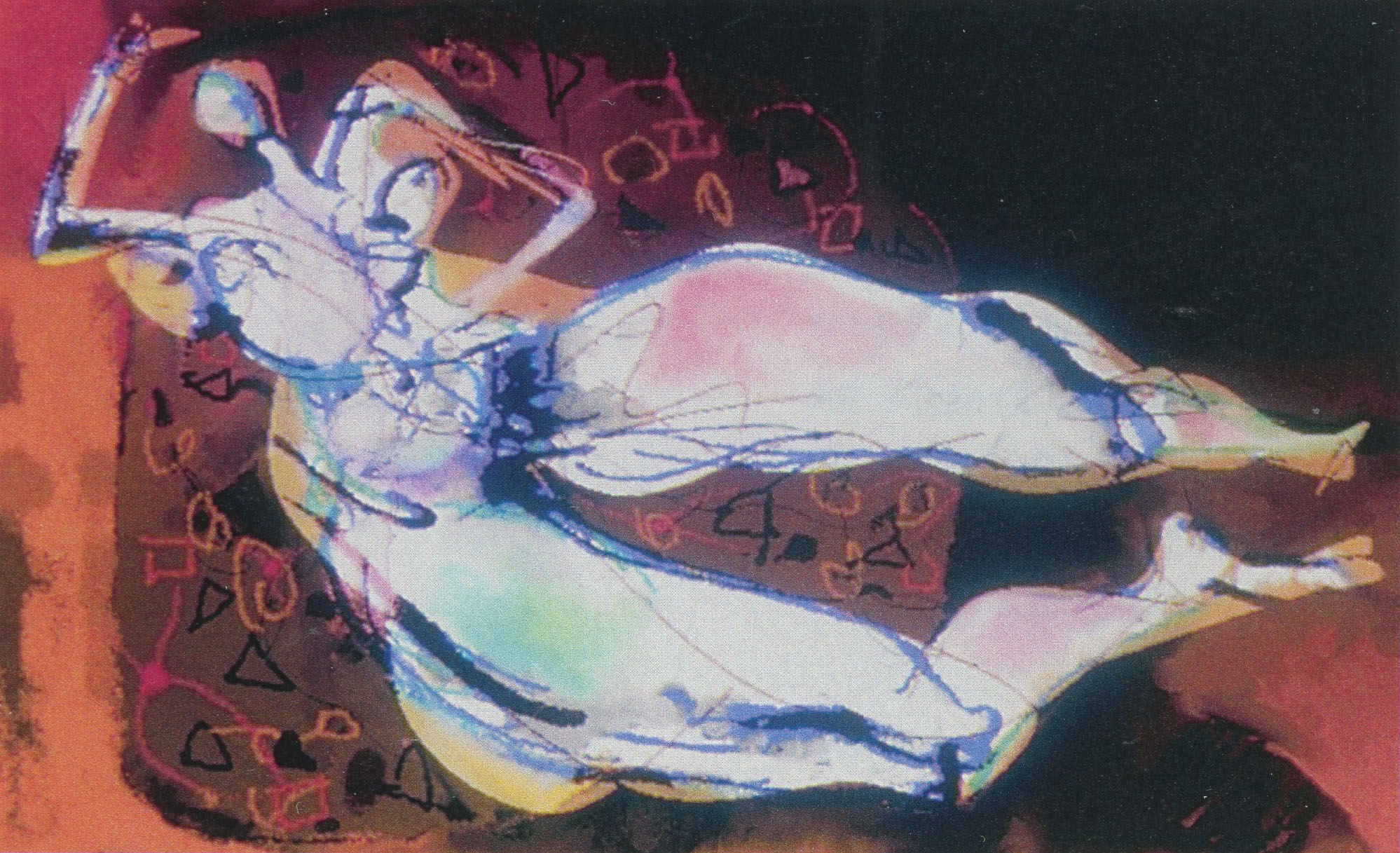Toshihiro Anzai: RENGA (Linked Images)
Artist(s):
Collaborators:
- Rieko Nakamura
- Machiko Kusahara
-
- Independent Curator and Consultant
Title:
- RENGA (Linked Images)
Exhibition:
Creation Year:
- 1994
Medium:
- Interactive Installation
Category:
Artist Statement:
The title RENGA (Linked Images) is a wordplay on RENGA (Linked Verse), a Japanese traditional poetical genre. The first ideogram, REN, means to link or associate. The second ideogram, GA, means poem. A different ideogram, also pronounced GA, means image. Substitution of GA (image) for GA (poem) creates a new word: RENGA (Linked Images).
The introduction to “Kokinshu (a collection of ancient Japanese poetry)” compiled in the early 10th century contains the following passage: “Waka Japanese poetry) moves Heaven and Earth without the use of physical force.” In modern times, literature is believed to develop in a metaphorical space outside of the physical space we inhabit. We all know that TV dramas are fiction and that fiction never interferes with reality. But in earlier times, metaphorical space and physical space were connected. Poetry was thought to mitigate a prevailing epidemic and occasionally served as a tool to lead a national project to success. Ancient people had a sense of awe and were moved by the mysterious power of words, which could affect an object without exerting any physical force.
This richness of words is lacking in modern society. The expression “could effect an object without exerting any physical force” could be applied to the electronic media around us. Today, it is digital technology that fuses physical and metaphorical space. Information network systems melt the long-frozen richness of the metaphorical space and restore its abundance to us. They also show us that an archetype of our new experiences in electronic media can be found in the expression of ancient people.
The ancient people’s most important suggestion might be the achievement of creative correspondence between one another. It is commonly believed that painting or composing poetry is an extremely solitary creative process. This is often true. But creation is sometimes a collective process, occurring within a “network of influences.” Such influences can be anything from inspiring hints, to subconscious stylistic appropriation, to responding to an existing theme. Most artwork is generally more the result of a dialogue than its creator consciously recognizes.
RENGA (Linked Images) was triggered by a workshop on computer painting held in the winter of 1991. A work by Rieko Nakamura was loaded into the painting system in front of me. Although the painting was digital data that could be reproduced an infinite number of times, I was reluctant to modify another person’s completed work. But I dared to add some touches to it, and then “undid” the change. I repeated this process several times. This casual operation gave me a pleasant surprise. After awhile, I forgot about undoing it and further modified the work in my style until it became a sort of hybrid of my style with remnants of Nakamura’s.
In April of 1992, I suggested to Nakamura a creative method to make this scintillating play an organized activity. Taking an image received in electronic mail, an artist would import it into a painting system, deform it, recontextualize it within another image, even print it out and physically draw on it, to rescan it. By repeating this process, a series of works just like a picture scroll would be created.
Each resulting image is something which is at once unquestionably one’s own artwork, while at the same time something which could never arise from one’s own artistic monologue. So far, we have tried two sessions of RENGA. We learned how to appropriate images from the other artist’s work, as well as to be appropriated. Just as learning another language leads to the discovery of a new self image, each of us has discovered another self through RENGA.
Perhaps the invention of RENGA (poetry) was a formalization of the natural interaction between oneself and the community, before the establishment of the contemporary sense of self as a tool. Digital media and network communications have the power to bring the fixed boundary of personality back to its innocent state. Cyberspace is often mentioned in terms of the gradual loss of our senses of time and distance. It may cause a loss of identity, but it could also serve as an opportunity to encounter our more natural and familiar self-image. RENGA (Linked Images), is an experiment in the acceleration of these possibilities within digital technology.
Other Information:
Contributors:
Toshihiro Anzai
Sapience Corp.
Rieko Nakamura
Hary & Company
Machiko Kusahara
Tokyo Institute of Polytechnics









